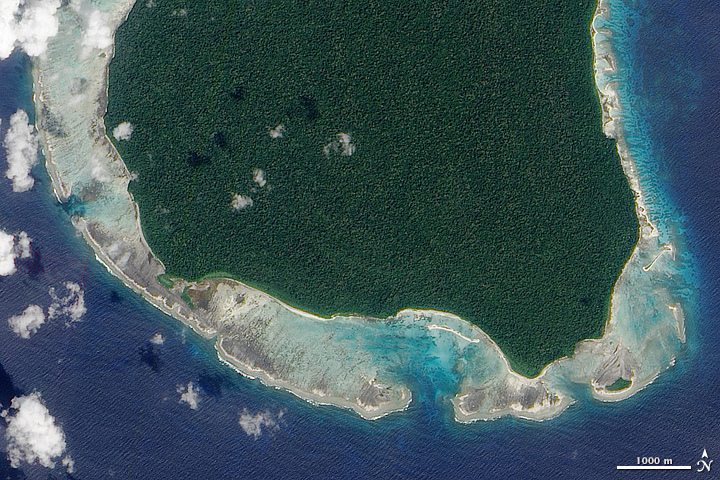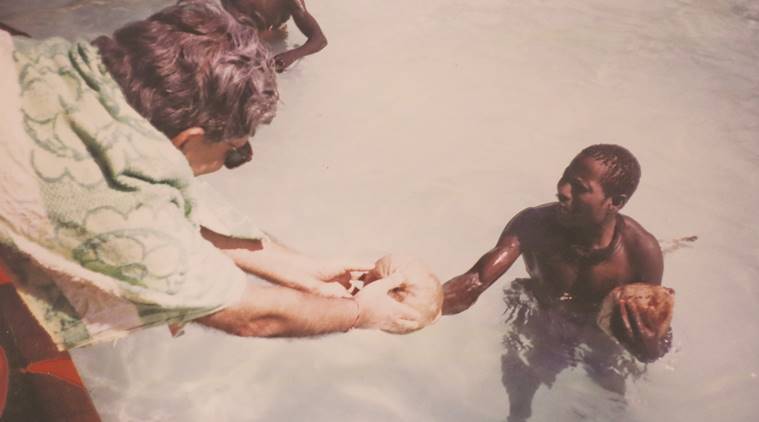Who Are The Sentinelese: A Tribe Living in Isolation?
Written by Sthitee Mohanty
One of the world’s most isolated tribes, the Sentinelese are unwilling to connect with outsiders.
Written by Sthitee Mohanty
Who are the Sentinelese people?

More about the Sentinelese people
The Sentinelese people are a tribe living on the North Sentinel Island, one of the Andaman and Nicobar Islands in the Bay of Bengal in the northeastern part of the Indian Ocean.
Being one of the world’s most isolated tribes, the Sentinelese are unwilling to connect with outsiders.
This tribe is still untouched by the modern world and knows nothing about the outside world or advanced technology.
They are called an uncontacted tribe because they thrive on their own. The small island community is healthy without any foreign interference or support.
The Sentinelese also called the Sentileni, are extremely isolated. All information on the tribe and its lifestyle comes from distant observation as the tribe is violent to outsiders who enter their island.
Where is North Sentinel Island?

North Sentinel Island is in the Bay of Bengal in the Andamans

What we know about the Sentinelese people
Even the name of the tribe, Sentinelese, derives from the island they live on. No one outside the island knows what the Sentinelese call themselves, what language they speak, or what customs they have.
It is estimated that 50-200 Sentinelese individuals live on the island. There is significant uncertainty regarding the actual size and demography of the island tribe.
The tribespeople often throw stones and shoot arrows at non-residents of North Sentinel Island. They are observed from helicopters and boats tied at more than an arrow’s distance from the island.
Even the neighboring Andamanese tribes like the Onge or the Jarawa do not know much about the Sentinelese people. Though they are from the same ethnic lineage, the Sentinelese do not welcome the people of the neighboring tribes to their island.
Part of the Indian Government
The tribe and the island come under the jurisdiction of the Indian Government.
The Indian Government has designated the Sentinelese as a Particularly Vulnerable Tribal Group and a Scheduled Tribe. They discourage tourists and other people from engaging with the tribe due to the tribe’s continued hostility towards outsiders.
The tribe also remains uncontacted for visitors might spread disease among the population – the members may not have any immunity against that disease. Even a disease like the flu or measles can decimate their numbers.
The Geography of the North Sentinel Island
The North Sentinel Island, home of the Sentinelese people, is part of the Andaman archipelago in the northeastern region of the Indian Ocean.
The island consists of tropical and subtropical vegetation. No details about the indigenous flora and fauna have been found due to the continued hostility of the Sentinelese people.
The geography of the island further isolates the tribe. The island is surrounded by a shallow reed with no protective harbors. It is difficult for ships to surpass such topological features.
The appearance of the Sentinelese
Photos and recordings of Sentinelese people are few and valued. It is hypothesized that they are of a tiny stature (5 ft 3 in/ 5 ft 5 in) because of the “island effect”.
The island effect is a rule in evolutionary biology that explains the small size of island residents as a result of the limited resources available on the island.
The Sentinelese people are dark-skinned and follow binary gender norms. The women wear fiber strings tied around their waists, necks, and heads. The men also wear necklaces and headbands, but with a thicker waist belt. The men carry spears, bows, and arrows
The lifestyle of the Sentinelese
The Sentinelese are a hunter-gatherer tribe. They use both marine and land resources. They are not known to engage in agriculture. It is said that they prefer to eat mollusks, based on the shells discovered in their abandoned settlements.
They fish by going out to the reef on narrow boats. These boats are narrow, outrigged canoes that can be used only in shallow waters. The boats are steered around with a pole.
It is thought that the Sentinelese live in three small bands. Their settlements have two different house types: there are large communal huts with several hearths for several families; temporary beach shelters with no walls that can be used by anyone.
History of the Sentinelese People
The history of the Sentinelese is wrought with trauma and non-violence. Outside entities continue to try to engage with them despite their continued displeasure at such contact.
The Sentinelese are one of the six native and reclusive Andaman and Nicobar tribes (the other five tribes are the Great Andanamese, the Onge, the Jarawas, the Shompen, and the Nicobarese.)
The tribe has consistently refused contact with the world outside their island. Their refusal has resulted in their attacking/killing any trespassers on the island.
First Sighting
The crew of an East India Company (a British company) vessel, the Diligent, reported viewing lights on the island. They did not further investigate.
In 1867, passengers of the stranded vessel Nineveh were attacked by unidentified islanders.
The first recorded reporting of the Sentinelese was in 1867 by a colonial officer called Jeremiah Homfray. Though Homfray mistakenly identified them as Jarawas.
Contact with the British
In 1880, a British Naval officer named, Maurice Vidal Portman established contact with the Sentinelese. Portman was the British colonial administrator of the Andaman and Nicobar islands and his arrival made the people flee the island.
While exploring the abandoned settlements, Portman found an elderly man, a woman, and four children. They were captured by Portman and taken to Port Blair for further examination – the man and the woman perished there. The children were returned to the island with gifts. Portman continued to visit the island.
It is widely believed that Portman’s visit and capture of the people have led to the tribe’s current hostility. The children who returned may have carried an illness that may have killed many of the Sentinelese population. That is perhaps why the Sentinelese are wary of outsiders.
Other British colonial administrators continued to visit the island to establish friendly contact with the tribe. Yet, they could never spot the Sentinelese people.
Contact with Indian anthropologists
After India attained independence, a 20-member team of Indian anthropologists, led by Trilok Nath Pandit, went to the island to contact the Sentinelese.
This was the first island visit led by a professional anthropologist. Though they failed to contact the tribe, they left gifts like coconuts on the beach.

(Image: TN Pandit)
The first photograph of the Sentinelese was published in the 1974 National Geographic print by Raghubir Singh. He was part of the National Geographic expedition to the island, which was undertaken with Pandit there as well. The members of the expedition were attacked by the tribe before they even stepped foot on the island.
The first peaceful expedition to North Sentinel Island happened in 1991 with an Indian anthropological team whose members were from various government departments. One member of the expedition was Dr. Maduhmala Chattopadhyay. She was the first female to establish contact with the Sentinelese people.
This series of contact expeditions continued till 1997. The government stopped further expeditions to prevent harm to the Sentinelese. The tribe also avoided all expeditions not led by Pandit or Chattopadhyay.
Further interactions with the Indian authorities
All further interactions with the Sentinelese continue at a distance. The Indian Government failed to conduct a proper census of the tribe. There is still a highly uncertain estimate of the total Sentinelese population.
The government aerially surveyed the island to estimate the effects of the 2004 Indian Ocean tsunami. The tribe responded violently to these surveys. They threw stones and sticks at the flying helicopters.
Recent Killings
There have been two recorded killings by the Sentinelese in recent times.
In 2006, two stranded Indian fishermen died at the hands of the Sentinelese. The fishermen were believed to be poaching near the island.
In November 2018, an American missionary by the name of John Allen Chau was killed by the Sentinelese for trespassing. He had wanted to contact the tribe and spread the gospels of Christ. He did not have the necessary permits to visit the island.
In the eyes of the Indian Government, his actions were illegal.
Current status of the Sentinelese Tribe
The Sentinelese community is in voluntary isolation. They are protected by the 1996 Andaman and Nicobar Islands (Protection of Aboriginal Tribes) Act.
The North Sentinel Island was declared a protected tribal reserve by the Indian government in 1956. No tourists are allowed to visit the island. Photography is prohibited.
The Indian Government encourages the Sentinelese tribe’s right to live isolated from the outside world. A constant armed patrol is maintained in the surrounding waters to prevent intrusion by outside people.
The intrusion of the island by outside people would further endanger the Sentinelese. The endogamous tribe (they marry within each other) lives in a pollution-free environment. Exposure to a new, foreign environment is deeply threatening to the entire tribe.
A handbook released in 2016 by the Anthropological Survey of India on “Vulnerable Tribe Groups” estimates the Sentinelese population at between 100 and 150.
Future concerns
In 2018, the Indian government launched new development plans to increase the tourism potential of the Andaman and Nicobar Islands. The government maintained that special permits would be required for visiting sensitive areas like the home of the Sentinelese people.
These developmental projects will irreversibly affect the Sentinelese tribe. The high influx of tourists to Andaman and Nicobar Island poses a great threat to the Sentinelese.

Better Your Child’s G.K. In 3 Minutes – Get This Free Newsletter
Get fun facts, simple and easy news, quizzes, and lots of other interesting things to read in your mailbox – for free! It’s what we call GK-on-the-go!
I Kid You Not now has a large readership across India and also parts of the world. If you want to write for us, you can submit your story here. You can also apply to become a news anchor. Apply here



Comments